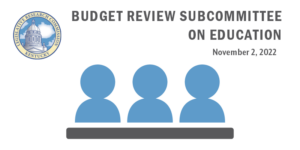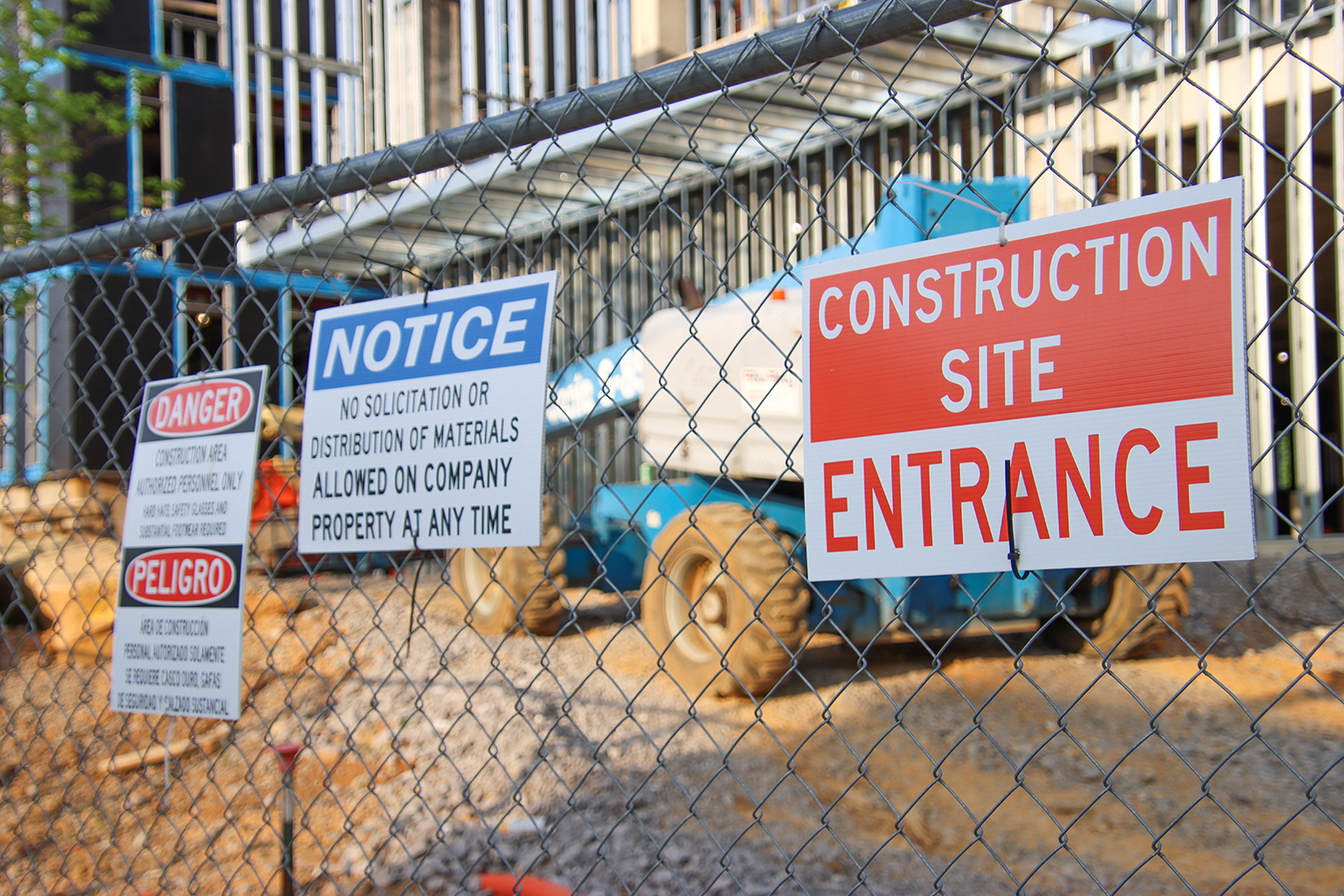
The Kentucky General Assembly’s Budget Review Subcommittee on Education heard from school superintendents about the struggle with rapidly increasing construction costs during their Nov. 2 meeting.
Chay Ritter, the Kentucky Department of Education’s (KDE’s) director of the Division of District Support, said school districts typically issue bonds or pay cash to finance projects. The bonding capacity, or a district’s borrowing power, is impacted by interest rates, credit ratings and existing debit service. Due to its bonding potential, a district can have a gap in funding that results in a project being built in phases over a longer time period, or a reduction in the project scope.
When construction is delayed, the costs may go up, Ritter said.
House Bill (HB) 678, passed by the legislature in 2022, accelerated construction projects by allowing a district to start new construction or renovation without the prior approval of KDE, Ritter said. The bill, a two-year measure that will expire unless the General Assembly takes further action in 2024, also allows a district to spend restricted funds on extracurricular facilities.
Currently, 150 of the Commonwealth’s 171 school districts are operating under HB 678.
“It saves considerable time and time is money in the construction business,” he said.
Ritter said several districts are either delaying or altering their construction projects due to the continued price increases, including:
- Menifee County: Construction of a new board office, estimated at $2 to $2.5 million in August 2021, had a revised estimate in May 2022 of $3.5 million. The district removed the basement/storage construction to save money, which means the district will have to rent storage space instead, an ongoing expense.
- Rowan County: Renovation and addition of Rodburn Elementary, estimated at $5.5 million in November 2021, was revised in March 2022 to $6.2 million. Another revision in August had estimates at $8.1 million, with more increases expected.
- Christian County: A consolidated high school project with an initial estimate of $107 million in November 2021 was up to $117 million in February 2022, and $137 million in May 2022. The district expects the project to exceed $137 million, and a reduction in the scope of the construction project is possible.
- Woodford County: An initial estimate of $36 million in July 2019 for a new high school increased in three years to $73 million.
Harrison County Superintendent Harry Burchett and Fleming County Superintendent Brian Creasman shared how the increased construction costs are affecting their district’s proposed projects.
Harrison County
Harrison County is home to seven educational facilities, six of which the district operates and the seventh is an area technology center owned and maintained by the district and operated by the state. The age of the facilities is an average of 60 years each, he said. The most recent facility was constructed in 1976 and the oldest in 1951.
“As a result, we are experiencing significant impact on plant maintenance and operation on those facilities,” Burchett said.
The four elementary schools all opened in 1964 as a part of consolidation in the community. The district now plans to consolidate all its schools on one campus. The proposed project is to build a new high school and repurpose the existing building as a middle school. The existing middle school building will be used to bring the three outlying elementary schools onto the campus.
Burchett said once completed, the district would see a net savings of approximately $1.5 million a year by cutting the costs of such things as school resource officers. Those funds would go into the general fund to increase opportunities for students.
The original estimate for all of the construction before the pandemic was about $45 million and is now about $73 million, Burchett said.
“And, of course, these costs just continue to inflate,” he said. “It’s act now or we are going to fall further and further behind.”
The construction delays also can result in a reduction in bonding potential as districts address problems that arise in the older buildings. Making necessary repairs or replacing faulty equipment can run into the millions, which in turn reduces the bonding potential for future projects, he explained.
Fleming County
Fleming County’s situation is very similar, said Creasman. Fleming County has six school buildings – four elementary, one middle and one high school – and a locally operated vocational program. Three of the elementary buildings are 60 years or older, and the district is trying to consolidate the three elementaries into one new building.
“Pre-pandemic, we would have had enough bonding potential to pull that off,” he said.
Before the pandemic, the estimated cost for the elementary consolidation project was about $18 million, but that has increased to $38 million.
With the consolidation of these three elementary schools, Creasman said, taxpayers in Fleming County would see a savings of about $750,000 a year.
Fleming County not only has older buildings, but Creasman noted that it has the last school in Kentucky – E.P. Ward Elementary – with a coal-burning furnace.
“There is no other project in schools that the public really sees,” said Creasman. “We talk about classrooms and how nice the classrooms look. The majority of the general public never sees those classrooms. They do see the exteriors. They know where that money goes.
“So, when you look at buildings from the 1960s, 1950s, and in the case of E.P. Ward, that is the coal-burning school, you see bricks falling, you see roofs collapsing and all of those bad things you see.”
But Fleming and Harrison are not alone with aging schools and facility needs. Creasman said there are a lot of school buildings that are 70 years old and older across the state.
“It touches every one of your districts,” he said.
In other action, the committee discussed the state Collaborative Center for Literacy Development and the Reading Recovery program. Reading Recovery is a national program offered through the center. It was developed for students in first grade who are struggling with reading.
The committee also received a monthly financial update on Kentucky State University.




Leave A Comment